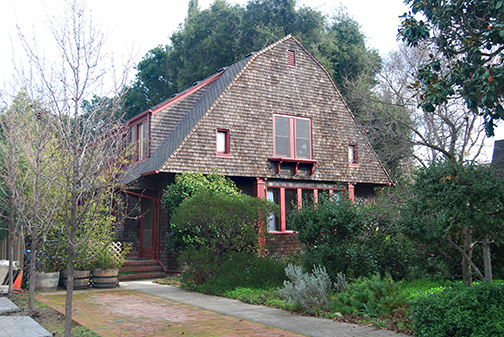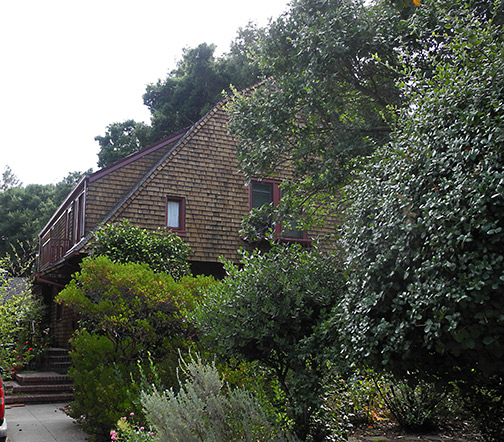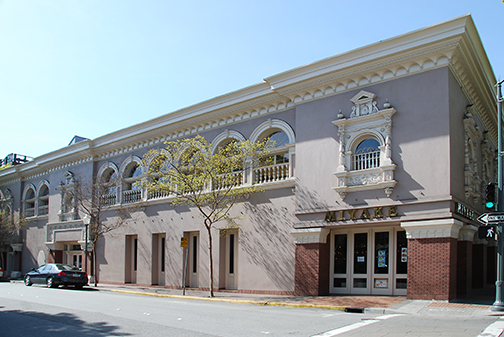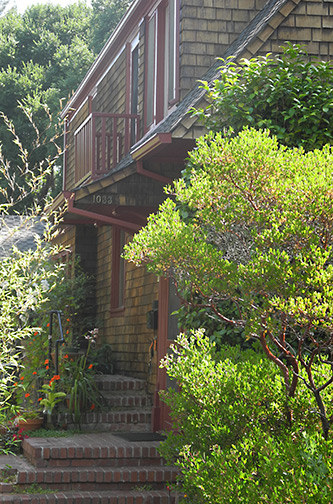 Palo Alto Stanford Heritage
Palo Alto Stanford Heritage  |
 |
When Stanford was founded, many faculty could not afford the minimum $4,000 required to build a house on leased campus land. They chose instead to settle in Palo Alto in an area that became known as Professorville, close to downtown amenities and easily accessible to the university. One such couple, were the newlyweds, Professor James Perrin Smith (1864–1931) and Frances Norris Rand Smith. James graduated from Wofford College in 1884, received a Masters from Vanderbilt University, and, after teaching high school science, joined the Arkansas Geological Survey under Dr. John Casper Branner. In 1892, after receiving a Ph.D. from Goettingen, he joined Branner at Stanford where he was a professor of geology and paleontology with a specialty in ammonites.
Perrin was famous for his ability to stimulate and inspire his students and, not to be overlooked, for his prowess as a baseball pitcher. Having been a college all star and having pitched in semi–pro leagues during summers, his prowess ensured that the Stanford faculty–student games were won by faculty.
Frances Rand Norris Smith (1873–1938) was a writer, artist and authority on the history of California missions. As a Stanford undergraduate in 1893, she studied architecture under Professor A. B. Clark. Settling in Palo Alto after her marriage in 1896, Frances honed her mechanical drawing skills while working in Stanford’s engineering department. In order to coordinate raising a family of four with her interest in architecture, she decided in 1908 to focus on a little heralded commodity, the Spanish Architecture of California.
In 1917, the California Historical Survey hired her to produce a series of architectural and historical studies of the missions. She personally interviewed priests, old residents and caretakers and studied and translated documents in the mission archives. Camping out with her family at the Carmel mission, she discovered the sites of two churches preceding the current one. Her first volume, The Architectural History of the Mission San Carlos Borromeo was published in 1921 and followed by The Spanish Missions of California in 1924 and The Mission of San Antonio de Padua of California six years later. Smith’s research, exacting sketches of architectural features, beautiful photography and quotations from original sources laid the groundwork for future scholars of Mission history and architecture.

The Smiths chose M. P. Madison to build their modest 1,792 square foot house. Madison, who had been the contractor for the 1898 Renaissance Revival Fraternal Hall on University Avenue was the low bidder against four other notable contractors: Laumeister, Hettinger, Mosher and Wells. Perhaps, his bid contributed to his eventual bankruptcy.

1033 Bryant Street is built in the Shingle style of architecture, dominant from 1880 to 1910 and seen in many of the earliest Professorville houses. A reaction against the flamboyant style of the Queen Anne style, Shingles have relatively simple lines and broad masses with complex shapes in the roof lines and building wings. The façade of the Smith’s two story house has a gambrel roof over the 2nd floor and attic. The roof is cantilevered over the 1st floor and is almost flush with the projecting bay below. Distinguishing features are subtle such as the arched attic vent and two small, recessed windows on either side of two centered, double hung windows. All the moldings are simple except for the corbel–supported base of the center windows.
The first floor bay window is the most ornate element on the house. It is asymmetrically placed with five large windows separated by a simple wood treatment. Full length pilasters with composite capitals adorn the ends of the bay. A characteristic feature of a Shingle style house is that it is designed from the inside out with doors and windows placed where needed. The exterior of the house seems to wrap the interior space with a continuous skin. A gabled roof with shed dormer windows is seen to the left of the house above the recessed entry door and porch. The rough–hewn siding and informal composition of 1033 Bryant suggests the informality and rusticity of New England settlers. Mono–toned and relatively unornamented, the house celebrates honesty of form, purity of line and the enthusiastic lives of the Smith family.©
PAST, January 9, 2015
E-mail us at either webmaster@pastheritage.org or president@pastheritage.org.
![]() Palo Alto Stanford Heritage—Dedicated to the preservation of Palo Alto's historic buildings.
Palo Alto Stanford Heritage—Dedicated to the preservation of Palo Alto's historic buildings.
Copyright © 2015 Palo Alto Stanford Heritage. All rights reserved.